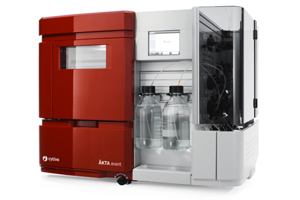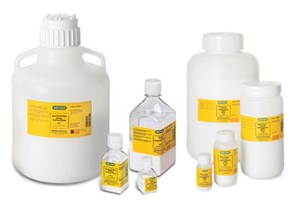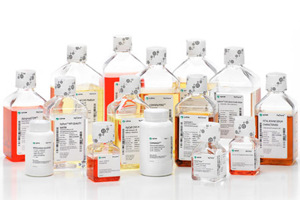CELL CULTURE WHITE PAPERS & CASE STUDIES
-
Can We Win The War Against Mycoplasma Contamination?
Mycoplasma maybe the smallest class of free living microorganism, but the consequences of a contamination in a cell batch during bioprocessing can be huge.
-
Better Characterization of Biomolecules Using Agilent AdvanceBio Reversed-Phase Columns
Reversed-phase (RP) is one of the three key techniques used in biochromatography and is particularly valuable because of its compatibility with LC/MS detection. And small particle improvements, such as those found in Agilent ZORBAX RRHD 300A, 1.8 um columns, make RP an attractive choice for many biopharmaceutical applications.
-
Efficiency Test Of ReadyToProcess™ Columns
ReadyToProcess™ columns are prepacked, prequalified, and presanitized process chromatography columns suited for purification of biopharmaceuticals (e.g., proteins, vaccines, plasmids, and viruses) for clinical phase I and II studies. ReadyToProcess columns are available with several media at different volumes (1, 2.5, 10, and 20 L).
-
Automate BRD4 Bromodomain TR-FRET Assays For HTS Applications
Post-translational histone modifications are critical for modulation of chromatin structure by direct DNA interaction and indirect molecular interactions with recruited nuclear proteins. By Pete Brescia, Brad Larson, and Peter Banks, BioTek Instruments, Inc., and D. Bochar and L. Blazer, Cayman Chemical Co.
-
Automating A Direct, Cell-Based, Target-Compound Interaction Assay For G9a And BET Bromodomain Proteins
Current biochemical assay technologies examine enzyme activity and G9a and BET bromodomain protein inhibition. Cell-based assays for these epigenetic players were previously limited to the detection of specific histone modifications using antibodies, with antibody specificity being an issue. By Brad Larson and Peter Banks, Applications Department, BioTek Instruments, Inc.
-
Automated Bioluminescent ADCC Reporter Bioassay Using Bioengineered Jurkat Cells
Pharmaceutical companies are increasingly exploring new biologic and biosimilar products, and thus increasing monoclonal antibody (mAb) immunotherapeutic research. By Tracy Worzella, Promega Corporation and Brad Larson, Applications Department, BioTek Instruments, Inc.
ABOUT
Cell Culture
Cell culture is a complex, highly structured process for growing cells, under strictly controlled conditions, outside of their normal environment. Cell cultures stilluse cultures of cells on flat plastic dishes.
This is referred to as two-dimensional (2D) cell culture. Aside from using Petri dishes for growing cells, scientists have for a long time, grown cells within biologically-derived matrices such as collagen or fibrin.
Today, more and more 3d cell cultures are being used because they more closely resemble the in vitro cell growth environment. Most 3d cell cultures in use today are designed for stem cell research, tissue engineering and drug discovery. As the field continues to grow and expand, 3d cell culture availability will likely expand to include other cell culture related fields.
For non-adhesive cells suspension cell cultures are used. In these cultures a cell is placed in the liquid suspension, stirred with a magnetic stirrer to agitate the cell and make it float freely in the suspension. The cell grows, divides and spreads throughout the suspension.
Cell culture refers to the culturing of cells derived from multi-cellular eukaryotes (cells with a nucleus), primarily animal cells. However cell cultures also exist for plants, fungi and microbes that include viruses, bacteria and microorganisms. Cell culture shares closely related methodology with tissue culture and organ culture.
You can separate cells from tissues for use in cultures several ways. Cells can be purified from blood but only white cells will grow in a culture. Mononuclear cells can be released from soft tissue using enzymes that break the cells away from their substrate or matrix. Pieces of tissue can also be placed in a growth media and the cells that grow from it can be used for cell cultures.




